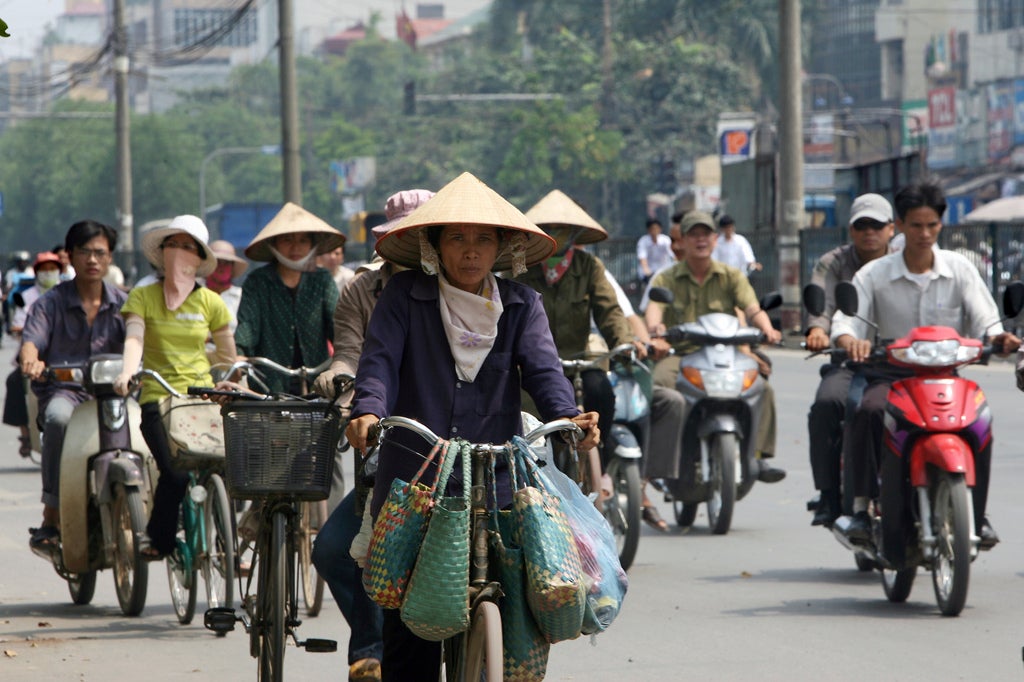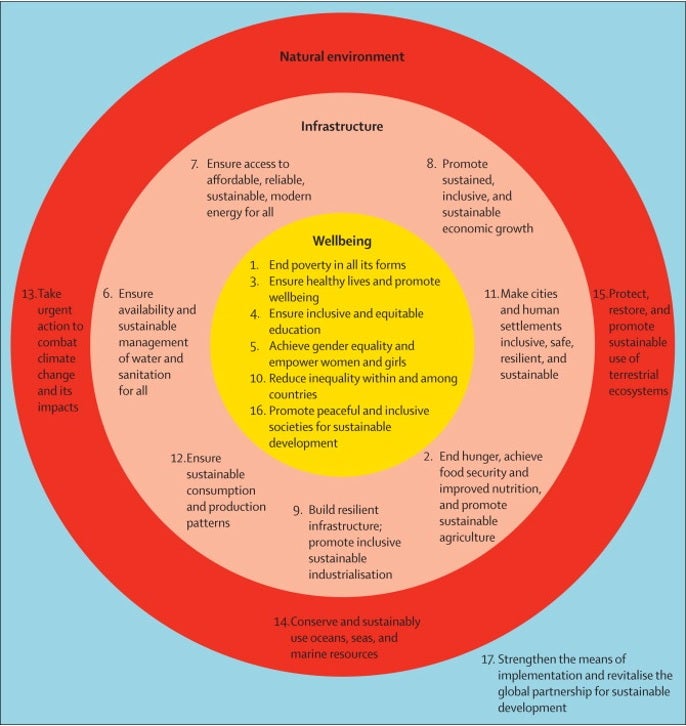
In an effort to ensure that globalization becomes a positive force for humanity, the UN General Assembly recently adopted the Sustainable Development Goals (SDGs).
The SDGs, with 17 goals and 169 specific targets, provide a more comprehensive vision of development than their predecessors, the Millennium Development Goals. The SDGs, also known as the Global Goals, embrace economic, social and environmental dimensions, as well as encourage countries to end poverty and enhance social and economic development in a sustainable manner. Multilateral Development Banks (MDBs) are committed to stepping up their support to ensure the SDGs’ success; making it essential to find innovative ways to help countries meet as many targets as possible.
A close analysis of the SDGs suggests that the goals are interwoven. The success of particular goals is essential in order to ensure the delivery of other goals. The Figure below shows the importance of these goal intersections, and how, for example, in order to achieve the goals related to wellbeing, the infrastructure and the natural environment goals need to be fulfilled. Thus, in order to attain the SDGs by 2030, much of the work needs to focus on the borderline areas, and intersectional spaces between the goals, and this will require the adoption of a holistic approach, which presumes everything is connected and that it is crucial to understand how and why the different parts combine to make a whole.
How can the World Bank Group take advantage of these intersectional and overlapping spaces between goals, with the purpose of strategically and effectively develop an action agenda for ensuring the attainment of the SDGs?
As previously mentioned, by adopting a holistic approach to development the Bank can have a higher impact on overall development outcomes. I am advocating for a shift in how we rationalize and operationalize projects by adopting a Holistic Process Model (HPM) that argues for “systems” projects rather than sector or topic specific ones.
Let’s take transport and gender as an example. By focusing on transport infrastructure, the World Bank can contribute directly or indirectly to the attainment of SDG goal five: Achieve gender equality and empower all women and girls- by 2030.
Women account for half of the world’s working population. However, they tend to earn less, work in less productive jobs, be over-represented in unpaid work, and face higher chances of unemployment. This situation is not only a detriment to women, their families and communities, but also to the local and global economy.
A McKensie Global Institute’s recent publication: The Power of Parity asserts that if men and women participated equally in the economy, the results would add up to $28 trillion, or 26 percent, to annual global GDP by 2025. Hence, empowering women and promoting gender equality is crucial to accelerating development.
Although gender mainstreaming has been a valuable tool to address gender issues within projects, it does not provide the necessary framework to establish gender empowerment as a final objective. For the SDG 5 on gender equality to be successful and sustainable it has to be planned and executed as a holistic and inclusive process.
So, can the transport sector be a direct or indirect factor in attaining the gender equality SDG? How can the transport sector adopt HPM to address gender in development?
Transport is essential to reducing poverty by giving access to jobs, education, goods, services and markets. Additionally, improved transport infrastructure benefits a country’s economy, thus creating more employment and opportunities for all, including women. However, it is important to mention that there is not always a clear and direct correlation between transport and its huge potential benefits; occasionally the benefits are indirect or secondary.
Figure 2 below shows a detailed analysis, using the HPM, of the connection between transport, and gender equality following the SDG framework. It also shows the different thematic areas where transport can be a direct and/or indirect contributor to gender equality and empowerment.
Let’s take the connections between SDG 8 with transport and SDG 5, shown in figure 2, as an example. Providing inclusive and sustainable economic growth, employment and decent work for all (SDG 8), cannot be possible unless it is accompanied by: 1. development of transport infrastructure- 2. Development of other infrastructure, programs, and policies that address women’s equal participation in the workforce. Thus, a strategy to achieve SDG 8 has to include by transport and gender equality projects.
.
However, it is important to keep in mind that in order to be a truly and effective HPM, the analysis presented here on transport and gender equality is only one piece of the puzzle. Thus going forward with HPM, the analysis should also include other topics such environment, additional infrastructures, other social areas and policy.
Some might argue that this type of holistic approach implies a lengthy, in-depth and complex process. However, in the long run, by combining efforts across sectors and different goals this process will provide more impactful benefits across various topic areas, thus contributing to both the attainment of the SDGs and the World Bank’s goals of ending extreme poverty and boosting shared prosperity.
Do you think HPM makes sense? Do you have other innovative ideas that can support development work efforts? Share your thoughts or other ideas.




Join the Conversation